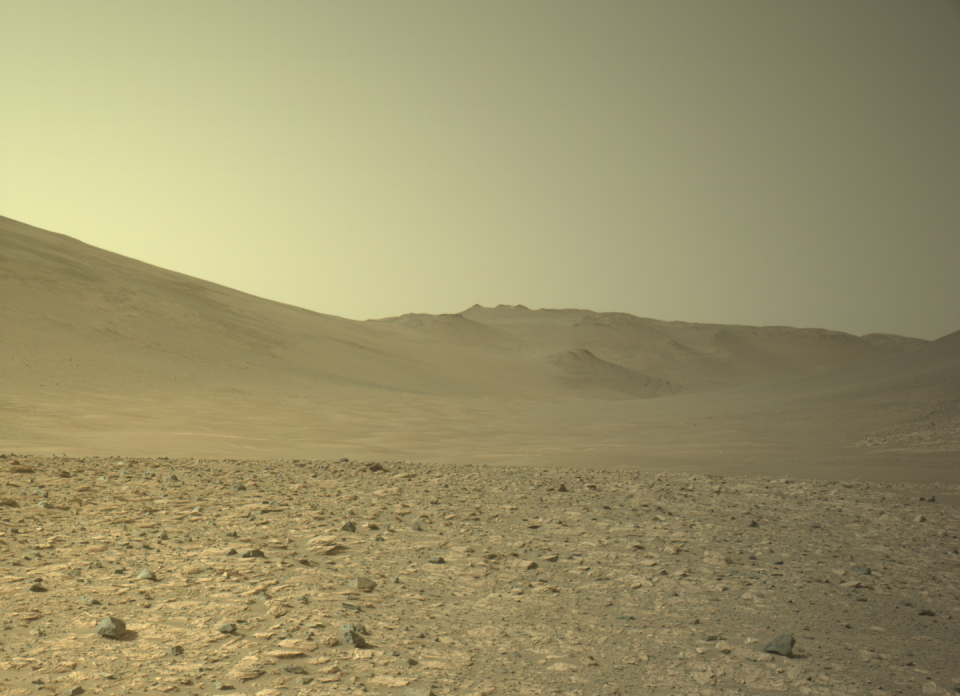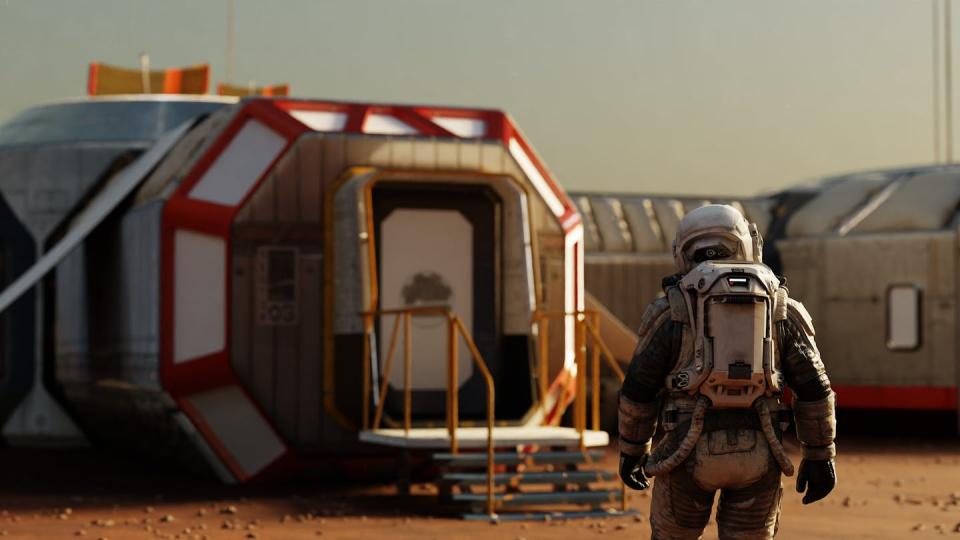
Curious Kids is a series for kids of all ages. If you have a question you’d like an expert to answer, send it to curiouskidsus@theconversation.com.
Could we ever make Mars like Earth? – Tyla, age 16, Mississippi
When I was in middle school, my biology teacher showed the class the science fiction movie “Star Trek III: The Search for Spock.”
The plot drew me in; a depiction of the “Genesis Project,” a new technology that transformed a dead alien world into one teeming with life.
After watching the movie, my teacher asked us to write an essay about this technology. Was it realistic? Was it ethical? And she asked us to channel our inner Spock: Did it make sense? This assignment made a big impact on me.
Fast forward to today, and I see myself as an engineer and professor who develops technologies that will take human existence beyond the Earth.
For example: I work on advanced propulsion systems to propel spacecraft beyond Earth orbit. I help develop lunar construction technologies to support NASA’s goal of a long-term human presence on the Moon. And I was on a team that demonstrated how to 3D print habitats on Mars.
It will take a lot of time, energy, and imagination to make humans live beyond Earth, but engineers and scientists are beginning to overcome many of the challenges.


A partial checklist: Food, water, shelter, air
After the Moon, the most logical place for humans to live outside of Earth is Mars.
So is it possible to terraform Mars, that is, transform it so that it resembles Earth and can support life? Or is this just the stuff of science fiction?
To live on Mars, humans will need liquid water, food, shelter and an atmosphere thick enough to hold heat and protect against radiation from the Sun.
But the Martian atmosphere is almost entirely carbon dioxide, with almost no oxygen, and it is very thin – only about 1% as dense as Earth’s.
The less dense the atmosphere, the less heat it can hold. Earth’s atmosphere is thick enough to hold enough heat to support life, an effect known as the greenhouse effect.
But Mars’ atmosphere is so thin that nighttime temperatures regularly drop to -101 degrees Celsius (150 degrees Fahrenheit).
So what’s the best way to get an atmosphere on Mars?
While there are currently no active volcanoes on Mars — at least not that we know of — scientists could trigger volcanic eruptions through nuclear explosions. Gases trapped deep inside a volcano would be released and then drift into the atmosphere. But that plan is a bit absurd because the eruptions would also release deadly radioactive material into the air.
A better idea: redirecting water-rich comets and asteroids to hit Mars. That would release gases from below the planet’s surface into the atmosphere while also releasing water from the comets. NASA has already shown that redirecting asteroids is possible — but it would take a relatively large and large number of asteroids to make a difference.
Making Mars comfortable
There are countless ways to warm the planet. For example, giant mirrors built in space and placed in orbit around Mars could reflect sunlight onto the surface and warm it.
A recent study suggested that Mars colonists could spread aerogel, an ultralight solid material, on the ground. The aerogel would act as insulation and trap heat. This could be done anywhere on Mars, including the polar ice caps, where the aerogel could melt existing ice and make liquid water.
You need soil to grow food. On Earth, soil is made up of five components: minerals, organic matter, living organisms, gases, and water.
But Mars is covered in a loose, dust-like material called regolith. Think of it as Martian sand. The regolith contains few nutrients that are not sufficient for healthy plant growth, and it is home to some nasty chemicals called perchlorates, which are used in fireworks and explosives on Earth.
Cleaning up the regolith and turning it into something livable won’t be easy. What the alien soil needs is a little Martian fertilizer, perhaps imported from Earth and made with the addition of extremophiles—hardy microbes that can survive in the harshest conditions. Genetically modified organisms are also a possibility.
Through photosynthesis, these organisms would begin to convert carbon dioxide into oxygen. Eventually, as Mars became more life-friendly to Earth-like organisms, colonists were able to bring more complex plants and even animals.
Getting oxygen, water, and food in the right proportions is extraordinarily complex. On Earth, scientists have tried to simulate this in Biosphere 2, a closed ecosystem that includes ocean, tropical, and desert habitats. Even there, scientists have a hard time getting the balance right, even though all of Biosphere 2’s environments are under control. Mother Nature really knows what she’s doing.


A house on Mars
Buildings can be 3D printed; initially, they would need to be pressurized and protected until Mars reaches Earth-like temperatures and weather. NASA’s Moon-Mars Planetary Autonomous Construction Technologies program is exploring exactly how to do this.
There are many other challenges. For example, unlike Earth, Mars has no magnetosphere to protect a planet from solar wind and cosmic radiation. Without a magnetic field, too much radiation would pass through for living things to stay healthy. There are ways to create a magnetic field, but so far the science is highly speculative.
In fact, all the technologies I have described are far beyond current capabilities on the scale required to terraform Mars. Developing them would require an enormous amount of research and money, probably far more than is possible in the near term. While the Genesis device in “Star Trek III” could terraform a planet in minutes, terraforming Mars would take centuries or even millennia.
And before humans begin transforming Mars into another Earth, there are many ethical questions that need to be resolved. Is it right to make such radical and permanent changes to another planet?
If all this sounds disappointing, don’t be. As scientists innovate to terraform Mars, we’ll use it to make life on Earth better. Remember the technology we developed to 3D print living spaces on Mars? I’m part of a group of scientists and engineers who are now using the same technology to print homes on Earth — which will help close the world’s housing gap.
Hello, curious kids! Have a question you’d like an expert to answer? Ask an adult to send your question to CuriousKidsUS@theconversation.com. Please tell us your name, age, and city.
And since curiosity has no age limit – adults, let us know what you’re curious about. We won’t be able to answer every question, but we’ll do our best.
This article is republished from The Conversation, a nonprofit, independent news organization that brings you facts and trusted analysis to help you understand our complex world. By Sven Bilén Penn State
Read more:
Sven Bilén is the co-owner of X-Hab 3D, Inc., which has received NASA STTR funding to develop lunar construction technologies and is developing 3D concrete printing systems. He receives funding from NASA, DARPA, and the US Air Force for 3D concrete printing technologies.